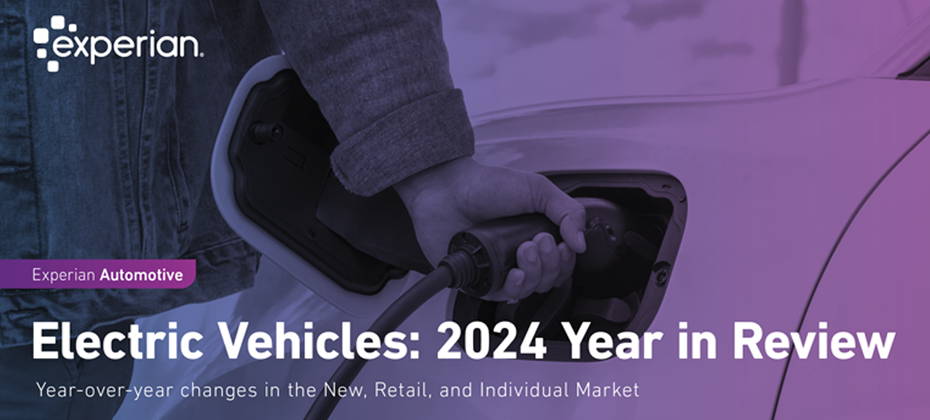Industries

As telecommunications providers race to modernize networks, enable 5G, and manage soaring data volumes, they also face unprecedented challenges – from tightening regulations and economic uncertainty to increasing customer churn and fraud. In this climate, artificial intelligence (AI) in telecommunications isn’t just a buzzword; it’s becoming a cornerstone for strategic survival and competitive differentiation. But the promise of AI is only as powerful as the data that fuels it and the decisions it enables. In this blog post, we explore the pressing challenges telecom providers face, including the evolving economic and regulatory landscape, and how Experian’s telecom solutions are uniquely equipped to support telecom leaders using advanced analytics, data-driven decisioning, and fraud prevention solutions. The current state of telecommunications: a perfect storm Telecom providers are under pressure from multiple angles: Shrinking ARPU and rising competition Average Revenue Per User (ARPU) is declining in many regions as price competition increases and Over-the-Top (OTT) services continue to displace traditional service lines. In North America alone, mobile ARPU has dropped by more than 8% in recent years1. Customer experience expectations Modern customers expect seamless digital experiences. Yet, legacy systems and data silos often prevent real-time personalization and service optimization, increasing churn risk2. Regulatory scrutiny and data privacy Telecoms must comply with a complex web of data protection and privacy regulations (GDPR, CCPA, KYC, etc.) while also navigating policies around fair access, net neutrality, and cross-border data flow3. Fraud and credit risk The growing prevalence of synthetic identity fraud and account takeovers demands more robust, intelligent fraud prevention and credit risk strategies, especially in prepaid and postpaid customer segments. In 2023, synthetic identity fraud caused more than $2.6 billion in financial damage globally4. The role of advanced analytics and AI in telecommunications Against this backdrop, AI and telecommunications are becoming increasingly intertwined. By leveraging AI and advanced data analytics, telecom operators can move from reactive to proactive operations. This includes: Churn prediction and mitigation using machine learning. Network optimization through AI-driven traffic forecasting. Fraud detection via real-time anomaly detection models. Credit risk modeling with AI-powered segmentation. However, not all AI solutions deliver the same level of impact. For telecom providers, challenges like fragmented data ecosystems, model governance, and the need for explainable outcomes—especially in highly regulated environments – can limit AI’s full potential. Only Experian can: solving telecom’s data and decisioning challenges This is where Experian stands out. As a trusted leader in data and decisioning, Experian provides telecoms with scalable, regulatory-compliant tools that can help accelerate digital transformation. Purpose-built telecom solutions Our telecom solutions are designed specifically to address sector pain points like fraud, credit risk, and customer churn. Whether you're a traditional mobile network operator (MNO) or a disruptive MVNO, Experian can help you make smarter decisions—faster.'Our telecom solutions are designed specifically to address sector pain points like fraud, credit risk, and customer churn. Whether you're a traditional mobile network operator (MNO) or a disruptive MVNO, Experian can help you make smarter decisions—faster. Advanced analytics expertise Experian helps telecoms harness the power of advanced analytics to make sense of complex, high-volume data. From customer segmentation to behavioral modeling, our tools bring clarity and actionability that unlock new value from existing data. Predictive modeling solutions that drive results With our specialized predictive modeling solutions, telecoms can implement next-best-action strategies across acquisition, onboarding, and retention. These models are tested, explainable, and auditable—ensuring compliance while delivering ROI. Robust fraud and identity capabilities With rising fraud threats including synthetic identity and account takeovers, Experian can deliver AI-enhanced, layered fraud prevention strategies. Our tools detect anomalies in real-time, leveraging fraud analytics and behavior-based risk signals, helping you reduce losses without adding friction to the customer experience. Scalable, future-ready advanced analytics solutions Our full suite of advanced analytics solutions enables telecoms to future-proof their operations, ensuring they stay compliant while innovating faster than competitors. Data-driven innovation: use cases Here’s how telecoms are already seeing ROI with Experian: A leading North American communications company retained 30% of revenue by implementing Experian Optimize to improve the growth and retention of customers. A multichannel media company used Experian’s solutions to drive a customer-focused approach to campaign planning resulting in a 35% increase in customer revenue without increasing marketing spend. A European wireless telecom provider optimized collections allocations, segmenting customers by demographic and behavioral groups to provide a higher rate of reconnections. Results included a 10% increase in net customer value, a 15% increase in balance collected and a 9% increase in collections agency earnings. Navigating what’s next in telecom The future of AI in telecommunications is promising for providers who can bridge the gap between AI aspiration and execution. Telecommunication providers must not only adopt the right technologies but also partner with trusted data stewards who understand the regulatory, economic, and operational landscape. We’re that partner. At Experian, we help telecom leaders go beyond surface-level insights to power meaningful outcomes, whether that’s to drive smarter acquisition, stronger client retention and faster innovation. Our solutions are grounded in trusted data and measurable outcomes. The pressure on telecoms isn’t going away. But with the right AI-powered tools and data-driven strategies, providers can shift from playing defense to leading with innovation. Now is the time to rethink how you approach data, risk, and customer engagement. Ready to see how Experian can help your telecom organization unlock the power of AI and advanced analytics? Explore our telecom solutions or contact an Experian expert to start transforming your strategy today. Learn more Partner with our team

What is feature engineering? Feature engineering helps organizations turn raw data into comprehensive model development. This process depends heavily on creating new custom features to enhance model performance, as well as the quality of the data being used. When data is fragmented or managed poorly, it can lead to increased operational costs, missed revenue opportunities, and compliance risks. The necessity of integrated feature management Feature engineering is essential for financial institutions to identify valuable features that provide significant insights and predictive power in various analytics applications. By integrating feature engineering into the feature lifecycle, organizations can convert raw data into more accurate and value-driving features, better manage features for audit purposes and compliance efforts, and build higher-performing models. At Experian, we have developed a unified feature engineering solution that integrates capabilities across various tools such as the Ascend Analytical Sandbox™ and Ascend Ops™. This comprehensive approach streamlines the feature engineering process, making it more efficient and effective in supporting the complete feature lifecycle. The challenges in feature engineering 54% of source data used by financial institutions for credit decisioning is not model-building ready.1 Financial institutions need access to high-quality data sources and the ability to modify and combine data to make more profitable data-driven decisions. In addition, organizations need the necessary tools to solve the myriad of challenges involved with feature engineering. These challenges include: Costs: Sourcing and centralizing data can be expensive, and managing and updating data definitions for engineering and analytics is costly. Collaboration: Managing a centralized feature library is difficult and often skipped. As AI and analytics teams become more complex across the enterprise, maintaining and governing feature definitions in a centralized library is a must-have. Inconsistencies: Calculating features can vary. Different calculations in development and production use cases across the lending lifecycle create model risks and compliance issues. Governance risks: Tracking lineage of data definitions is important to avoid elevating risks. Data engineers and scientists need to visualize upstream and downstream impacts as they modify feature definitions. Resources: Teams often have skills gaps and require additional expertise, as they may lack an understanding of automated credit reports amongst resources. Integration: Evaluating and integrating features into the analytics lifecycle is difficult. This can hinder understanding of the value of models and strategies throughout the lending lifecycle and create friction at deployment. Experian Feature Builder: a comprehensive solution Experian Feature Builder is a modern, integrated custom feature solution that combines development, deployment, and management technologies. It accelerates the feature lifecycle through efficient data management and streamlined end-to-end workflows. Users can access the Ascend Analytical Sandbox for custom feature development and seamless connection to Ascend Ops for deployment and ongoing management. This integration also significantly enhances compliance and governance by adding a layer of visibility into feature performance, thereby reducing risks through feature monitoring. Leveraging best-in-class technologies Feature Builder Notebooks enables users to review feature code in Jupyter Notebooks within Ascend Analytical Sandbox, explore data, execute small sample feature calculations, examine feature distributions, edit feature code, and register to the feature library. Feature Builder Studio enables users to review and manage features in the feature library, set up feature calculation jobs, and define feature sets for deployment. Users can also add Ascend Ops to deploy to production with little to no friction. Supporting advanced analytics in consumer credit with integrated feature management Experian Feature Builder provides a centralized feature library, ultimately improving time to market and decisions to extend credit while managing default and fraud risks. Centralized access to data sources used in custom features and intermediation of third-party data sourcing. Advanced lineage tracking for a clear view of the history of upstream and downstream feature dependencies for governance purposes. Streamlined feature registry for built-in version management and tracking with feature correlations and distributions. Key statistical reporting for out-of-the-box data visualizations and monitoring of feature correlations and distributions. Comprehensive feature lifecycle support through integration with Ascend Analytical Sandbox for rapid analytics use case iteration and experimentation as well as production-grade execution and deployment with Ascend Ops. The future of feature engineering Understanding how essential feature engineering is in producing value-driving features, managing and monitoring features for audit and compliance purposes, and more predictive and high-performing models is pivotal to maintaining competitiveness in the financial services industry. Experian Feature Builder is the future of feature engineering. With integration for advanced analytics, model development through deployment, and enhanced feature management capabilities supporting compliance and governance, Experian Feature Builder supports the complete feature lifecycle. To learn more about how Experian Feature Builder can revolutionize your feature engineering, please visit our website and book a demo with your local Experian sales team. Learn more about Feature Builder 1 Experian research 2023

Customer retention is crucial for lenders to maximize lifetime value, especially during economic uncertainty. Increasing customer retention rates by just 5% can boost profits by 25% to 95%. However, many lenders struggle with loyalty, as seen in Q2 2024 when mortgage servicers’ retention rates for refinances dropped to 20%, the second lowest in 17 years. Nonbanks and banks also saw significant declines. This is due to increased competition, changing economic conditions, and a lack of personalization. Key strategies for improving customer retention Lenders can improve retention by leveraging data for personalization, maintaining consistent communication, offering loyalty rewards, and utilizing retention triggers. Leverage data for personalization. Use customer data to offer tailored products and refinancing options based on financial behaviors. Using credit attributes, trended data and alternative credit data (alternative financial services data, cashflow attributes, etc.) can help provide deeper insights of your customers. Maintain consistent communication. Keep customers informed with regular updates about interest rate changes or new loan products. Use a variety of communication channels, including email and in-app messaging, to ensure customers are kept in the loop. Ensure your customer service team is always available and responsive, offering clear answers to any financial concerns. Offer loyalty rewards. Develop programs that reward repeat business and referrals. Offer special rates or discounts for returning customers or for those who refer friends and family to your services. Increase customer lifetime value (LTV) by offering additional services like financial planning or credit score monitoring. Utilize retention triggers. Identify key events for engagement with automated retention triggers. For example, a borrower who has a mortgage with a fixed rate may be less likely to consider refinancing unless prompted. Experian’s Retention TriggersSM can notify lenders when refinancing might be beneficial to their customer, offering them personalized incentives or new product options at the right time. Why Experian’s Retention Triggers? By integrating Experian’s Retention Triggers, lenders can keep borrowers engaged, increase retention, and boost profitability even in tough economic times. Advanced data insights: Gain deeper insights into your customers’ behavior to identify those at risk of leaving and take proactive action. Personalized engagement: Automate personalized communications based on customer behaviors, ensuring timely engagement. Increased revenue: By offering personalized, timely and relevant offers, you can increase the likelihood of retaining your customers and growing your revenue. Make customer retention a priority In today’s challenging economic climate, lenders who focus on personalized experiences, consistent communication, and relevant offers will stand out and retain borrowers. Leverage tools like Experian’s Retention Triggers to proactively engage customers, reduce churn, and foster long-term relationships for increased profitability and success. Learn more

GenAI is pushing financial institutions to focus on improving efficiency, productivity, and time to value during the modeling lifecycle. Experian Assistant provides robust tools for data exploration, model building, deployment, and performance monitoring, allowing users to drive better decision-making.

While many industry pundits are assessing how macroeconomic changes may impact the future of the automotive market, recent data suggests consumers tend to stick to specific fuel types. According to Experian’s Automotive Market Trends Report: Q4 2024, over the last 12 months, 77.5% of electric vehicle (EV) owners replaced their EV with another one, with 15.6% returning to gas-powered vehicles. Meanwhile, 82.2% of gas vehicle owners replaced it with the same fuel type, while only 4.7% made the switch to electric. It’s important for professionals to recognize that most consumers tend to replace their vehicles with the same fuel type. Additionally, knowing who is making these purchases and the types of vehicles being registered allows better anticipation for consumer needs and ultimately enhances the buying experience while fostering consumer loyalty. Breaking down fuel types by generation Through Q4 2024, Baby Boomers predominantly registered new gasoline vehicles, accounting for 74.7% of their choices, while 15.9% opted for hybrids and 6.6% chose EVs. Millennials showed a similar trend, with 69.2% registering gas vehicles, followed by 15.1% selecting hybrids and 12.5% choosing EVs. Gen Z also favored gasoline vehicles at 74.0%, with hybrids making up 14.3% and EVs at 9.1% of their registrations. Although gasoline vehicles account for the majority of new registrations, EVs and hybrids are steadily gaining ground, particularly among the younger generations who are drawn to advanced features that align with their preferences. This will likely play a role in shaping the future of vehicle registrations as more gas alternative models hit the market and consumers make the switch. To learn more about vehicle market trends, view the full Automotive Market Trends Report: Q4 2024 presentation on demand.

In the latest episode of "The Chrisman Commentary" podcast, Experian experts Ken Tromer, Director, Mortgage Market Engagement, and Ted Wentzel, Senior Product Marketing Manager, talk about why price transparency is important in the verification process, and how Experian Verify ensures it. Listen to the full episode for all the details and tune in to the previous episode to learn more about reducing mortgage pipeline fallout and improving loan pull-through rate. Listen to podcast

While CUVs and SUVs continue to dominate the market, sedans remain a popular choice among consumers. According to Experian’s Automotive Consumer Trends Report: Q4 2024, sedans accounted for 18.4% of new retail registrations and 36.9% of used. Comparatively, CUVs/SUVs came in at 59.3% for new and 38.6% for used. For retail sedan registrations, the Toyota Camry made up the most market share for both new and used in the last 12 months, coming in at 10.5% and 6.0%, respectively. Meanwhile, the Honda Civic came in a close second for new sedan registrations at 10.1% and the Honda Accord followed closely for used at 5.9%. Knowing which sedan models are leading in registrations is important for professionals as it helps them understand evolving consumer preferences, enhance marketing strategies, and make informed inventory decisions. Understanding the key generations fueling the sedan segment When examining generational interest in this vehicle segment, data found Gen Z and Millennials over-indexed in new retail sedan registrations. In the past 12 months, Gen Z represented 12.4% of new retail sedan registrations, while their total new retail registration was 8.2%. Millennials had 27.3% of sedan registrations out of 27% total registrations. Understanding who is purchasing and what models they’re gravitating towards can unlock valuable insights as professionals craft their next move and position themselves one step ahead in a competitive market. To learn more about sedan insights, view the full Automotive Consumer Trends Report: Q4 2024 presentation.

The electric vehicle (EV) market continues to see remarkable growth as both new and used registrations rise year-over-year. For the first time, new EVs accounted for 9.2% of all retail vehicle registrations across the U.S. in 2024, according to Experian’s 2024 EV Year in Review Report, and used EV registrations climbed to just over 1%, from 0.7% the year prior. As we dove into the data, we found that Tesla remains the dominant player in both new and used sectors; however, the shift in consumer preferences is extending across various manufacturers with more models hitting the market. For instance, Tesla accounted for 50.7% of new retail registrations in 2024, from 60.6% in 2023. Meanwhile, Ford increased from 4.7% to 6.2% year-over-year and Hyundai went from 4.2% to 5.4%. On the used side, Tesla made up 59% of retail registrations, from 60% in 2023, while Chevrolet grew from 7.1% to 9% and Nissan was at 5.4%, from 8.3%. As the EV market continues to grow, it’s not just the various manufacturers making waves; geographical trends are also coming into play in shaping how these vehicles are being embraced nationwide. While EV adoption is expanding well beyond the traditional EV strongholds, California still holds the highest number of registrations, with Los Angeles accounting for more than 180,000 new retail EV registrations, followed by San Francisco at 91,000+ and San Diego with more than 31,000. Hartford and New Haven, Connecticut experienced the highest growth in new retail EV registrations over the last five years, reaching 110.5% in 2024. Close behind were El Paso, Texas (with a 99% increase), and Colorado Springs, Colorado (with an 85.7% spike). These shifts highlight the rapid expansion of EV adoption across the country as we see more consumers in diverse areas opting for the fuel type. Analyzing and leveraging the broader range of registrations will help automotive professionals as they identify emerging markets to effectively tailor their strategies. To learn more about EV insights, visit Experian Automotive’s EV Resource Center.

Market volatility, evolving regulations, and shifting consumer expectations are a catalyst to make energy providers to rethink how they operate. Rising energy costs, grid reliability concerns, and the push for sustainable energy sources add layers of complexity to an already challenging landscape. In this environment, data analytics in utilities has become a strategic imperative, enabling companies to optimize operations, mitigate risks, and enhance customer experiences. With a wealth of data at their disposal, utilities must harness the power of utility analytics to transform raw information into actionable intelligence. This is where Experian’s energy and utilities solutions come into play. With an unmatched data reach of more than 1.5 billion consumers and 201 million businesses, we are uniquely positioned to help energy and utility providers unlock greater potential within their organizations, whether that’s by boosting customer engagement, preventing fraud and verifying identities, or optimizing collections. Market Challenges Facing the Utilities Sector Utilities today face a series of economic, regulatory, and operational hurdles that demand innovative solutions. Regulatory and Compliance Pressures: Governments and regulatory bodies are tightening rules around emissions, sustainability, and grid reliability. Utilities must balance compliance with the need for cost efficiency. New carbon reduction mandates and reporting requirements force energy providers to adopt predictive modeling solutions that assess future demand and optimize energy distribution. Economic Uncertainty and Rising Costs: Inflation, fuel price fluctuations, and supply chain disruptions are impacting the cost of delivering energy. Utilities must find ways to improve financial forecasting and reduce inefficiencies—tasks well suited for advanced analytics solutions that optimize asset management and detect cost-saving opportunities. Grid Modernization and Infrastructure Investments: Aging infrastructure and increased energy demand require significant investments in modernization. Data-driven insights help utilities prioritize infrastructure upgrades, preventing costly failures and ensuring reliability. Predictive analytics models play a crucial role in identifying patterns that signal potential grid failures before they occur. Customer Expectations and Energy Transition: Consumers are more engaged than ever, demanding personalized service, real-time billing insights, and renewable energy options. Utilities must leverage advanced analytics to segment customer data, predict energy usage, and offer tailored solutions that align with shifting consumer preferences. Rising Fraud: Account takeover fraud, a form of identity theft where cybercriminals obtain credentials to online accounts, is on the rise in the utility sector. Pacific Gas and Electric Company reported over 26,000 reports of scam attempts in 2024 and has received over 1,700 reports of attempted scams in January 2025 alone. Utility and energy providers must leverage advanced fraud detection and identity verification tools to protect their customers and also their business. How Data Analytics Is Transforming the Utilities Industry Optimizing Revenue and Reducing Fraud Fraud and revenue leakage remain significant challenges. Utilities can use data and modeling to detect anomalies in energy usage, identify fraudulent accounts, and minimize losses. Experian’s predictive modeling solutions enable proactive fraud detection, ensuring financial stability for providers. Enhancing Demand Forecasting and Load Balancing With renewable energy sources fluctuating daily, accurate demand forecasting is critical. By leveraging utility analytics, providers can predict peak demand periods, optimize energy distribution, and reduce waste. Improving Credit Risk and Payment Management Economic uncertainty increases the risk of late or unpaid bills. Experian’s energy and utilities solutions help providers assess creditworthiness and develop more flexible payment plans, reducing bad debt while improving customer satisfaction. Why Experian? The Power of Data-Driven Decision Making Only Experian delivers a comprehensive suite of advanced analytics solutions that help utilities make smarter, faster, and more informed decisions. With more than 25 years of experience in the energy and utility industry, we are your partner of choice. Our predictive analytics models provide real-time risk assessment, fraud detection, and customer insights, ensuring utilities can confidently navigate today’s economic and regulatory challenges. In an industry defined by complexity and change, utilities that fail to leverage data analytics in utilities risk falling behind. From optimizing operations to enhancing customer engagement, the power of utility analytics is undeniable. Now is the time to act. Explore how Experian’s energy and utilities solutions can help your organization harness the power of advanced analytics to navigate market challenges and drive long-term success. Learn more Partner with our team

Quick Summary: Leasing continues to increase in the electric vehicle (EV) market. EVs accounted for nearly 20% of all new vehicle leases in Q4 2024, up from only 2.11% of new vehicle leases four years ago in Q4 2020. With consumers looking for flexibility—both in monthly payment and model availability—we’re seeing leasing continue to surge in the electric vehicle (EV) market. According to Experian’s State of the Automotive Finance Market Report: Q4 2024, EVs accounted for 19.5% of all new vehicle leases this quarter, up from 11.7% last year and a substantial increase from 2.1% in Q4 2020. Diving a bit deeper, data found EVs accounted for 9.3% of all new purchases in Q4 2024. Of those EVs, 50.1% were leased, while 38.9% were financed through loans. With lease payments for EVs ultimately being more affordable compared to loans and the excitement of driving the latest models packed with advanced technology, it’s no surprise we’re seeing leasing grow in popularity. Top leased EVs: How do lease and loan payments compare? As more consumers transition to EVs and manufacturers introduce new options to their lineup, certain models have become top choices for those opting to lease. Tesla accounted for the top two leased EVs in Q4 2024, with Tesla Model 3 coming in at 12.2% and Tesla Model Y at 9.1%. However, the Honda Prologue followed closely at 8.8% this quarter. Rounding out the top five were Hyundai IONIQ 5 (6.9%) and Chevrolet Equinox EV (5.9%). It’s notable that leasing has traditionally been a value-driven option for consumers, and the same holds true in the EV market. Leasing continues to offer lower monthly payments, making the finance option stand out for those looking to test an EV before purchasing or simply wanting the latest model on the lot. In Q4 2024, the average payment difference between a loan and a lease was $175. Though, the average monthly payment to lease a non-luxury EV was $504 this quarter, noting a $205 difference compared to the $709 loan payment. By comparison, the average monthly payment between a loan and leased luxury EV was $98—coming in at $842 for a lease and $940 for a loan. As more consumers choose to lease EVs, automotive professionals in both new and used markets have a chance to capitalize on this trend. By leveraging this data, those in the new retail market can effectively reach the right audience, while those in the used market can stay ahead of the curve and prepare for the influx of off-lease models in the coming years. To learn more about automotive finance trends, view the full State of the Automotive Finance Market: Q4 2024 presentation on demand.

In the latest episode of “The Chrisman Commentary” podcast, Experian experts Joy Mina, Director of Product Commercialization, and David Fay, Solution Consultant, talk about reducing mortgage pipeline fallout and improving loan pull-through rate. Listen to the full episode for all the details and check out the previous episode to explore how lenders can navigate a tight mortgage market, from rates to equity. Listen to podcast

In today's fast-paced financial landscape, demand deposit accounts (DDAs) have become a cornerstone for both consumers and financial institutions. These accounts, which include checking, savings, and money market accounts, offer the flexibility of accessing funds on demand without prior notice. As the financial industry evolves, the demand for consumer DDAs continues to grow, driven by the need for convenient and accessible banking solutions. Why DDAs are critical for financial institutions As a financial institution, consumer DDAs are crucial for you for several reasons: Customer Acquisition and Retention: DDAs can serve as the first point of contact between customers and financial institutions. By offering attractive DDA options, you can attract new customers and retain existing ones, fostering long-term relationships. Revenue Streams: DDAs generate revenue through various channels like interest on account balances, and also provide opportunities for cross-selling other financial products and services, enhancing overall profitability. Data Insights: DDAs offer valuable insights into customer behavior and spending patterns. Financial institutions can leverage this data to tailor their products and services, improve customer satisfaction, and develop targeted marketing strategies. Liquidity Management: DDAs help you manage liquidity by providing a stable source of low-cost funds. The deposits in these accounts can be used to support lending activities and other financial operations, ensuring your financial stability. These points highlight the strategic importance of consumer DDAs in the overall business model of financial institutions, making them a critical component for success. Attracting and retaining Gen Z and millennial customers Gen Z and Millennials are more likely to change financial institutions frequently. Capturing this audience is essential, as Gen Z will likely be the largest and wealthiest generation in the future. Members of this generation value digital capabilities, personalized experiences, and flexibility, often switching banks to find better services and offers. Over 40% of Gen Z switched financial institutions between 2023-2024 1. A few strategies for attracting and retaining these critical generations include: Digital-First Approach: Both Gen Z and Millennials have grown up with technology and expect seamless digital experiences. Offering robust online and mobile banking platforms with features like digital account opening, real-time transaction alerts, and easy fund transfers is crucial. Credit Card Cross-sell Opportunities: Among Gen Z and Millennials, credit cards continue to be the most in-demand banking product2. By pairing attractive DDA offers with compelling credit cards, you can pave the way for DDA opportunities with current card-only customers. Personalization: These generations value personalized experiences. You can use advanced data analytics to offer customized financial products and services that meet individuals’ needs and preferences. Personalized communication and tailored offers can significantly enhance customer satisfaction and loyalty. Financial Education and Tools: Providing educational resources and tools to help manage finances can be a significant draw. Gen Z and Millennials appreciate institutions that offer budgeting tools, financial literacy programs, and personalized financial advice, and are likely to stick with institutions that also act as a trusted advisor. Innovative Features: Offering innovative features like integration with digital wallets, buy-now-pay-later options, and family banking tools can appeal to the tech-savvy nature of these generations. Keeping up with the latest technology trends ensures that the institution remains relevant and attractive. What consumers want in a demand deposit account With today’s high-interest rates and digital banking services, consumers are willing and able to move their money now more than ever. It’s important to understand what a consumer values in a DDA to stay competitive: Accessibility and Convenience: Consumers want easy access to their funds at any time, whether through ATMs, online banking, or mobile apps. The ability to manage their accounts and perform transactions seamlessly is a top priority3. Interest Earnings: While not all demand deposit accounts offer interest, many consumers appreciate the opportunity to earn interest on their balances. This feature can make a DDA more attractive compared to non-interest-bearing accounts3. Security and Fraud Protection: Security is paramount for consumers. They want assurance that their funds are protected against fraud and unauthorized access, with features like real-time alerts and robust fraud detection systems3. These features collectively enhance the appeal of demand deposit accounts, making them more attractive to consumers seeking reliable and efficient banking solutions. How Experian Partner Solutions can help We offer a suite of tools and services designed to help financial institutions attract and retain your DDA customers: Advanced Data Analytics: We leverage extensive data analytics to understand consumer behavior and preferences. This allows you to create highly targeted and personalized offers that resonate with potential customers. Personalized Financial Insights: By leveraging comprehensive financial data, we can help you offer personalized insights and action plans that help customers manage their finances more effectively. This personalized approach can significantly enhance customer satisfaction and loyalty. Identity Monitoring: Our credit and identity alerts empower your consumers to spot potential fraud, assess risks, and respond before they become a victim of identity theft. By personalizing these alerts, we can drive consumers to your portal to review their risk level and respond in real time, giving you opportunities through additional touchpoints. Financial Wellness Solutions: We offer comprehensive credit and financial management tools to help your customers better understand the credit environment and learn how they can most effectively manage their finances. Educated, financially healthier customers are less likely to miss payments and ultimately pose less risk to your business. By utilizing these capabilities, we can help you attract and retain customers for DDA accounts, ultimately driving growth and enhancing customer satisfaction. The demand for consumer DDAs is on the rise, driven by the need for accessible and flexible banking solutions. Financial institutions like credit unions and banks attract new deposits by offering competitive interest rates, seamless digital banking experiences, and personalized financial products. As consumers seek more convenience and value, financial institutions must innovate to meet evolving expectations and retain deposit growth. We offer the tools and insights needed to navigate this evolving landscape, helping you thrive in a competitive market. This article includes content created by an AI language model and is intended to provide general information. References [1] Why Gen Z is Switching Banks | Chime [2] 2025 Will Be the Year of the Credit Card | The Financial Brand [3] What Is a Demand Deposit Account? | Banking Advice | U.S. News

With cybersecurity threats on the rise, organizations are turning to token-based authentication as a secure and efficient solution to safeguard sensitive data and systems. Data breaches impacted 1.1 billion individuals in 2024, a staggering 490% increase from the previous year.1 Token-based authentication is a method of verifying a user's identity through digital tokens rather than traditional means such as passwords. These tokens are temporary and serve as access keys, allowing users to securely interact with systems, applications, and networks. The goal of token authentication is to strengthen security while improving the user experience. Instead of relying solely on static credentials (like passwords), which can be intercepted or stolen, leveraging a type of multi-factor authentication like tokens adds an additional layer of security by functioning as dynamic access credentials. How token-based authentication works Token authentication unfolds through a series of steps to ensure robust security. Here's a simplified breakdown of how it works in practice: User request and authentication: When a user attempts to log in, they provide their credentials (e.g., username and password). These credentials are verified by the authentication server. Token generation: After verifying the user's credentials, the server generates a token — a cryptographically secured string often containing information like the user's ID and permissions. Token sent to the user: The generated token is sent back to the user or their device to confirm authentication. Token usage for access: Now authenticated, the user uses the token to access the system or application. The token is passed along with each request to ensure the user is authorized to proceed. Token validation: Each time a token is presented to the server, its integrity and expiration are verified. If the token is valid, access is granted; if not, the session is terminated. Token expiration and renewal: Tokens are typically temporary and expire after a set period. Users must either re-authenticate or renew the token for continued access. This limits the time window during which a stolen token can be misused. Types of token authentication methods Token authentication comes in different forms to meet various use case requirements. Common types include: JSON Web Tokens (JWT) Lightweight, self-contained, and easily transferred between clients and servers, JWT is one of the most widely used token formats. It includes claims, which are bits of information about a user encoded within the token, such as roles and permissions. Example: A financial application uses JWTs to ensure only registered users can access private account data. OAuth tokens OAuth is an industry-standard authorization protocol that uses tokens to grant limited access to applications without revealing the user's credentials. It’s often used for third-party service integration. Example: When you log into an e-commerce platform using your Google credentials, OAuth tokens authorize access. Session tokens These are temporary tokens stored on the server to track authenticated sessions, commonly used in web applications to ensure secure browsing. Example: Online banking platforms rely on session tokens for secure user sessions. Refresh tokens Refresh tokens are designed to renew access tokens without requiring the user to log in repeatedly. They extend session durations while maintaining a high-security standard. Example: A subscription service app uses refresh tokens to maintain a seamless user experience without frequent logouts. Benefits of token-based authentication Token-based authentication offers several advantages that make it a preferred security measure for organizations of all sizes. Enhanced security: Tokens reduce the risk of breaches as they are temporary and encrypted. They’re also specific to sessions, applications, or devices, meaning unauthorized users cannot reuse stolen tokens effectively. Elimination of password reliance: Tokens reduce dependence on static passwords, which are often reused and susceptible to brute-force attacks. This bolsters an organization’s overall cybersecurity posture. Improved user experience: Token authentication allows for more seamless interactions by minimizing the need for repeated logins. With features like single sign-on (SSO), users enjoy convenient access to multiple platforms with a single token. Scalability: Tokens are flexible and can adapt to varied business use cases, making them ideal for organizations of all scales. For instance, application programming interfaces (APIs) and microservices can communicate securely via token exchanges. Supports compliance: Token-based authentication helps organizations meet regulatory compliance requirements by offering robust access control and audit trails. This is critical for industries like finance, healthcare, and e-commerce. Cost efficiency: While implementing token-based authentication may require an initial investment, it reduces long-term risks and costs associated with data breaches, system downtime, and customer trust. How Experian can help strengthen your authentication process At Experian, we recognize that strong security measures should never compromise the user experience. That's why we offer cutting-edge identity solutions tailored to meet the needs of organizations. Our tools allow you to integrate token-based authentication seamlessly into your systems while ensuring compliance with security best practices and industry regulations. Are you ready to take your business's security and user experience to the next level? Visit us online today. Learn more 12024-2025 Data Breach Response Guide, Experian, 2024. This article includes content created by an AI language model and is intended to provide general information.

The financial services industry faces increasing pressure to innovate in today's fluctuating interest rate environment. For regional banks and credit unions, effective deposit growth strategies involve more than just offering attractive rates. Leveraging data and analytics is key to enhancing deposit portfolios, improving customer engagement, and fostering financial wellness. By prioritizing consumer-focused solutions, institutions can achieve dual benefits: driving organizational growth while meeting customer needs. For a deeper dive into this subject, check out our on-demand webinar “Growing Beyond Interest Rates: The Opportunity for Demand Deposit Accounts.” The current state of interest rates and market dynamics As interest rates change, financial institutions encounter shrinking margins and heightened competition. The stakes are high: 54% of consumers plan to leave their banks within the next year1, often citing unmet expectations for personalized services and financial guidance2. This competitive environment requires innovative strategies to retain customers and attract new ones without solely relying on interest rates. Key challenges: Shrinking margins due to rate volatility. Increased competition from fintechs and alternative providers. Rising consumer expectations for personalized, proactive services. Leveraging data and analytics in your deposit growth strategies Regional banks and credit unions can distinguish themselves by investing in advanced data analytics and personalized engagement tools. These strategies help create value for customers while improving the institution’s operational efficiency and revenue potential. 1. Personalization through financial insights According to Experian data, more than half of consumers expect their financial provider to actively support their financial wellness2. However, one-third feel that current efforts fall short3. Offering tools like spending trackers, budgeting resources, and personalized credit score improvement plans can help close this gap. 2. Engagement-driven solutions Consumers are more likely to stay loyal to institutions that provide actionable insights. Experian’s partners have seen a 5% lift in 12-month retention rates among customers enrolled in credit and identity programs according to data reported by partners2. Alerts for credit monitoring and financial updates not only keep customers informed but also help drive monthly logins, enhancing cross-sell opportunities. 3. Identity and data protection as value-added services With the increasing threat of identity theft, proactive identity monitoring and restoration services are becoming critical. Banks offering these features—branded under their name—can boost customer satisfaction and loyalty. Practical steps for regional banks and credit unions To capitalize on these opportunities, financial institutions should consider the following steps: Step 1: Develop a customer-centric engagement program Tailor programs to different demographic groups. Millennials and Gen Z are particularly drawn to tech-savvy solutions that integrate seamlessly with their financial lives. By consolidating financial management tools within one portal, banks can help simplify customers’ lives and enhance engagement. Step 2: Focus on retention and cross-sell opportunities Consumers engaged with financial tools, such as credit score trackers or budgeting aids, exhibit stronger loyalty and are more likely to adopt additional products. Use insights from these tools to offer personalized product recommendations that align with their financial journey. Step 3: Offer premium tiers Institutions can create tiered service packages, starting with free offerings (e.g., basic credit monitoring) and progressing to paid premium packages that include advanced identity protection or financial management analytics. Step 4: Utilize advanced analytics for targeting By analyzing anonymized customer data, banks can identify high-value segments and tailor marketing efforts to their specific needs. This targeted approach fosters more meaningful relationships and improves ROI on acquisition campaigns. Case for Action: Why consumer engagement matters A customer engagement program does more than enhance loyalty, it helps drive measurable outcomes: Retention rates: Over 98% for free services and 91% for paid programs.4 Improved credit scores: Subprime consumers enrolled in credit-building tools see an average credit score increase of 32 points.5 Higher satisfaction scores: Some institutions offering comprehensive financial tools report a lift in Net Promoter Scores (NPS). Conclusion The path forward for regional banks and credit unions lies in moving beyond rate-based competition and looking to multipronged deposit growth strategies. By leveraging data, analytics, and consumer-focused programs, financial institutions can enhance their deposit portfolios and deepen customer relationships. Now is the time to transform engagement into a growth engine, ensuring long-term success in a dynamic market. Ready to elevate your deposit portfolio with our tailored solutions? Click below to learn more or contact us to schedule a consultation and design a program that meets your organization’s goals. Learn more Watch the webinar 1 Retail Bank Customer Satisfaction Holds Steady but Trust Declines, J.D. Power Finds, 2024 2 Experian internal analysis, 2024 3 MX, What Influences Where Consumers Choose to Bank, June 2023 4 Experian Core metrics analysis, October 2023 5 Experian Data, Credit Score Rates with subprime consumers, June 2022 – June 2023

As Valentine’s Day approaches, hearts will melt, but some will inevitably be broken by romance scams. This season of love creates an opportune moment for scammers to prey on individuals feeling lonely or seeking connection. Financial institutions should take this time to warn customers about the heightened risks and encourage vigilance against fraud. In a tale as heart-wrenching as it is cautionary, a French woman named Anne was conned out of nearly $855,000 in a romance scam that lasted over a year. Believing she was communicating with Hollywood star Brad Pitt; Anne was manipulated by scammers who leveraged AI technology to impersonate the actor convincingly. Personalized messages, fabricated photos, and elaborate lies about financial needs made the scam seem credible. Anne’s story, though extreme, highlights the alarming prevalence and sophistication of romance scams in today’s digital age. According to the Federal Trade Commission (FTC), nearly 70,000 Americans reported romance scams in 2022, with losses totaling $1.3 billion—an average of $4,400 per victim. These scams, which play on victims’ emotions, are becoming increasingly common and devastating, targeting individuals of all ages and backgrounds. Financial institutions have a crucial role in protecting their customers from these schemes. The lifecycle of a romance scam Romance scams follow a consistent pattern: Feigned connection: Scammers create fake profiles on social media or dating platforms using attractive photos and minimal personal details. Building trust: Through lavish compliments, romantic conversations, and fabricated sob stories, scammers forge emotional bonds with their targets. Initial financial request: Once trust is established, the scammer asks for small financial favors, often citing emergencies. Escalation: Requests grow larger, with claims of dire situations such as medical emergencies or legal troubles. Disappearance: After draining the victim’s funds, the scammer vanishes, leaving emotional and financial devastation in their wake. Lloyds Banking Group reports that men made up 52% of romance scam victims in 2023, though women lost more on average (£9,083 vs. £5,145). Individuals aged 55-64 were the most susceptible, while those aged 65-74 faced the largest losses, averaging £13,123 per person. Techniques scammers use Romance scammers are experts in manipulation. Common tactics include: Fabricated sob stories: Claims of illness, injury, or imprisonment. Investment opportunities: Offers to “teach” victims about investing. Military or overseas scenarios: Excuses for avoiding in-person meetings. Gift and delivery scams: Requests for money to cover fake customs fees. How financial institutions can help Banks and financial institutions are on the frontlines of combating romance scams. By leveraging technology and adopting proactive measures, they can intercept fraud before it causes irreparable harm. 1. Customer education and awareness Conduct awareness campaigns to educate clients about common scam tactics. Provide tips on recognizing fake profiles and unsolicited requests. Share real-life stories, like Anne’s, to highlight the risks. 2. Advanced data capture solutions Implement systems that gather and analyze real-time customer data, such as IP addresses, browsing history, and device usage patterns. Use behavioral analytics to detect anomalies in customer actions, such as hesitation or rushed transactions, which may indicate stress or coercion. 3. AI and machine learning Utilize AI-driven tools to analyze vast datasets and identify suspicious patterns. Deploy daily adaptive models to keep up with emerging fraud trends. 4. Real-time fraud interception Establish rules and alerts to flag unusual transactions. Intervene with personalized messages before transfers occur, asking “Do you know and trust this person?” Block transactions if fraud is suspected, ensuring customers’ funds are secure. Collaborating for greater impact Financial institutions cannot combat romance scams alone. Partnerships with social media platforms, AI companies, and law enforcement are essential. Social media companies must shut down fake profiles proactively, while regulatory frameworks should enable banks to share information about at-risk customers. Conclusion Romance scams exploit the most vulnerable aspects of human nature: the desire for love and connection. Stories like Anne’s underscore the emotional and financial toll these scams take on victims. However, with robust technological solutions and proactive measures, financial institutions can play a pivotal role in protecting their customers. By staying ahead of fraud trends and educating clients, banks can ensure that the pursuit of love remains a source of joy, not heartbreak. Learn more